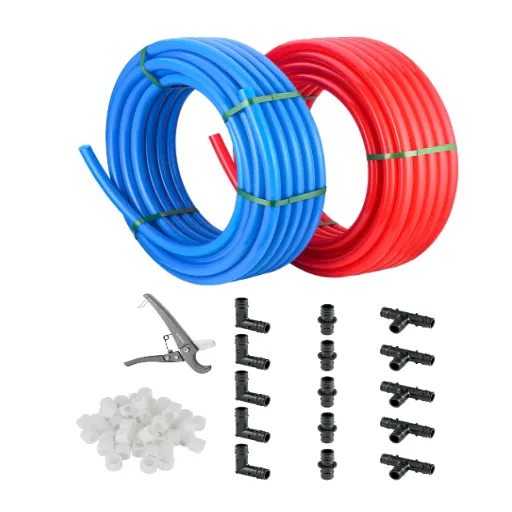Efficiency, durability, and simplicity are the critical factors in modern water systems. PEX tubing became a material after the flexibility, durability, and ease of installation that have garnered much attention in the plumbing field. Whether you are a professional plumber or contractor, or perhaps just a serious do-it-yourselfer, it is paramount to know everything about 3-4 PEX pipe when executing or working on water systems. This guide is eternally ensconced into all things PEX tubing, including its applications, benefits, installation, and why it has become THE option for thousands of water distribution projects. Let’s find out how this wonderful technological feat can ease your plumbing adventures and provide you with results that last forever.
Understanding PEX Pipe
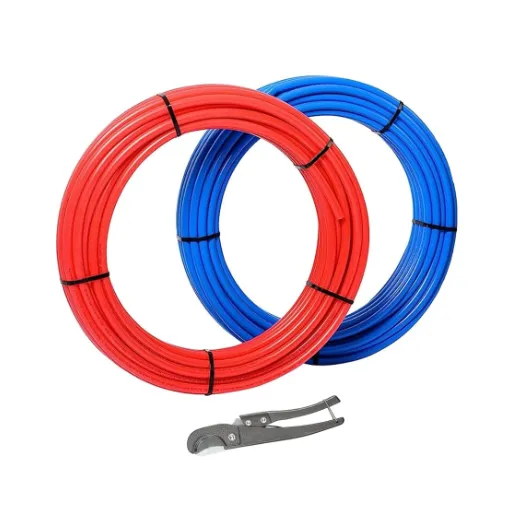
What is PEX Pipe?
PEX pipe is a type of flexible plastic tubing widely used in residential and commercial plumbing systems. The process used in making it cross-links polyethylene molecules, thereby imparting enhanced durability, flexibility, and thermal resistance. Hence, one could consider it a very sturdy alternative to the more traditional metal and hard plastic pipes.
Characteristic resistance to corrosion and scaling helps PEX pipes in ensuring uninterrupted clean water flow for considerable periods. It handles hot water and cold water systems well due to the broad temperature range it can withstand, which is usually between -40°F and 200°F. It is also easy to install, being quite flexible; one can guide it around tight corners and through walls while incurring fewer fittings than one would probably have used in a rigid system with copper or PVC.
PEX pipe installation is also said to be fairly prompt and inexpensive. There is little weight, hence it is easy to transport and install more rapidly than many of the traditional materials. Modern plumbing systems often use PEX piping, which could be set top-side down into home-run manifolds for optimized types of water distribution. Given its adaptability, safety certifications, and versatility, PEX pipe has emerged to be a preferred choice for applications, including potable water systems, radiant heating systems, and snow-melting systems.
Types of PEX Tubing
PEX tubing exists mainly in three categories, established by different methods employed to cross-link polyethylene molecules. Each type has a distinct property evaluation and application:
PEX-A
This type of tubing is manufactured using the Engel method, offering the highest degree of cross-linking (about 80%) of the three types. This feature confers great flexibility to the tubing and best suits installations requiring very tight bending radii or cold-weather applications. It is highly kink-resistant, and when kinks do occur, they can generally be repaired with the application of heat.
PEX-B
PEX-B is produced by the Silane method, offering a medium degree of cross-linking (about 65 to 70%). It is a bit stiffer than PEX-A, but it can offer excellent resistance to chlorine and oxidative damage, which makes it ideal for potable water systems. However, it does not tolerate kinks well, which can create weak points that installers must be careful to avoid.
PEX-C
PEX-C, meaning tubing has been produced through the Electron Beam or Radiation method with the lowest degree of cross-linking (about 60%), remains less common. It is not favored for reduced flexibility and cracking potential when stressed. Nevertheless, PEX-C sometimes provides a cheap alternative for applications in which durability and flexibility are not the prime considerations.
💡 Pro Tip: When choosing a PEX tubing type, the decision should be made based on the intended application and environmental factors. For most residential and commercial applications, PEX-A is a suitable all-around choice. Yet, for projects concerned with dollars and involving little physical stress, PEX-B or PEX-C can be acceptable alternatives.
Advantages of Using PEX for Water Systems
- Flexibility and Ease of Installation: Highly flexible PEX tubing is installed easily compared with rigid materials such as copper or PVC! Its bending capability allows it to harmonize with corners and obstacles having fewer fitting requirements, thus saving time and labor during installation. It is said that the installation of PEX can reduce labor costs up to 30% in comparison to traditional materials.
- Resistance to Corrosion and Scaling: With an assurance of not corroding or scaling off due to mineral deposits, PPEX will surely assure and extend the life of a water system and bring down the maintenance cost. Research shows the average life of PEX is about 50 years if installed under ideal conditions.
- Lower thermal Conductivity: An advantage of PEX is that its thermal conductivity is lower than that of copper, and hence, less heat is lost through hot water systems, thereby making them more energy-efficient. Likewise, the same thermal conductivity properties of PEX prevent condensation on cold water lines, which is favorable for climates of all types.
- Better freeze resistance: Due to the flexibility, PEX tubing allows a little expansion when water freezes, so pipe bursts can be avoided even when temperatures plunge to the extreme. This makes PEX reliable when installed in freezing-temperature-prone regions.
- Cost-Effectiveness: PEX tubing is much cheaper than copper piping in terms of both material and installation charges. According to a cost study in 2023, PEX materials are approximately 25-40% cheaper than copper, making them a cost-efficient solution for residential and commercial construction.
Specifications of 3-4 PEX Pipe
Size and Dimensions of 3-4 PEX
PEX subsidiary tubing with a nominal size of 3/4 inch becomes a common provision for use in residential and commercial plumbing because it tries to equalize capacity and flexibility. Normally, a 3/4-inch PEX has an approximately 0.875-inch (22.2 mm) outer diameter, while the inner diameter may differ, depending on its wall thickness and the type of PEX used (whether PEX-A, PEX-B, or PEX-C). Quite commonly, the wall thickness for PEX of 3/4 inch will have a range from 0.097 to 0.100 inch, or about 0.671 inch (17.04 mm) inside diameter.
The rating systems of operating pressures for standard 3/4-inch PEX are temperature dependent. At 73 degrees. F (23 deg. C), it carries the rating of 160 psi, and at 180 °C. F (82 deg. C), the design pressure is 100 psi. Hence, this rating allows its use in hot and cold water distribution systems. In addition, the flow rate capacity of 3/4-inch PEX can supply enough water for mid- to large-scale applications that comprise multiple fixture connections or branch systems in a plumbing system.
Three-quarter-inch PEX is generally installed either in coiled rolls or as straight pieces of pipe. Lengths may vary from 10 feet for the rigid pipes up to 300 feet for the flexible coils. Considerable versatility with respect to fittings is thus provided, and this also means fewer potential leak points and efficient labor installation.
Material Properties and Durability
This plastic material, Cross-linked polyethylene, or PEX, offers exceptional physical properties suitable to perform the highest demands of modern plumbing, radiant heating, and fluid distribution. Flexibility is probably the biggest characteristic of PEX; the tubes can be bent around obstacles, so fewer elbows or joints are used on the lines, allowing for less flow resistance and increased reliability in the system. Cross-linking increases strength and thermal stability, thus allowing resistance to heat (up to 200°F) and pressure (up to 160 psi, depending on the temperature).
Also, in terms of chemical degradation, scaling, and corrosion resistance, PEX greatly excels over the metal-reinforced traditional pipes of copper or galvanized steel. Freeze damage resistance is also afforded to PEX pipes, which can undergo slight expansion when water freezes inside them, eventually contracting back to size without rupture-on the condition that “it” is well designed. Its performances and circuits remain intact over a prolonged period and have been confirmed by studies estimating a lifespan of 40-50 years or more in regular conditions.
🌱 Environmental Benefits: From the environmental perspective, PEX supports sustainable development as it calls for much lower energy input during its manufacturing when compared to alternatives, and being much lighter, it reduces emissions during transportation. These features, alongside its ease of installation and ability to withstand durability under different operating conditions, make PEX one of the finest materials in piping and distribution applications.
Temperature and Pressure Ratings
PEX pipes are manufactured to withstand operational conditions, with temperature and pressure ratings being designed to ensure reliability. Generally, standard PEX pipes are rated to withstand temperatures of up to 200°F at 80 psi and pressures of 160 psi at 73°F. These very ratings make up the gamut of applications for PEX from residential hot and cold water systems, hydronics heating, to some industrial applications.
| Temperature | Pressure Rating | Application |
|---|---|---|
| 73°F (23°C) | 160 psi | Standard cold water systems |
| 180°F (82°C) | 100 psi | Hot water distribution |
| 200°F (93°C) | 80 psi | Maximum operating conditions |
Long-term performance-wise, PEX is well resistant to thermal and mechanical stresses. At near-threshold temperatures of 180°F, the PEX pipe is often rated for 100 psi, thus enduring conditions of hot water. In addition, PEX-aluminum-PEX (PEX-AL-PEX), a kind of PEX with an aluminum core, can give higher pressure resistance and lower expansion, an added advantage in heating applications.
⚠️ Important Note: You need to refer to manufacturers’ technical data sheets for each particular product since ratings may slightly diverge for each grade of PEX (such as PEX-A, PEX-B, or PEX-C) due to differences in their production methods. These differences affect aspects such as flexibility, resistance to creep, and system applicability.
Applications of 3-4 PEX Pipe in Plumbing
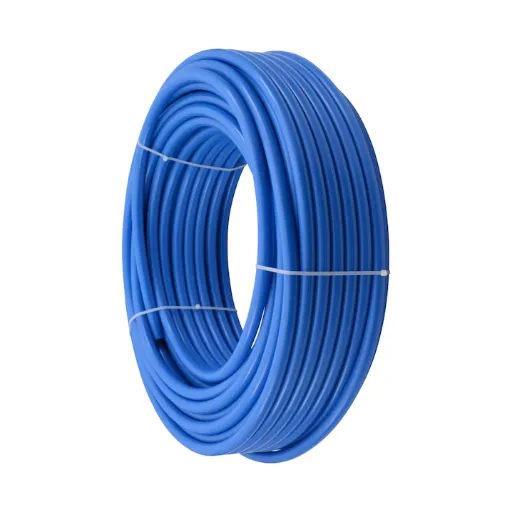
Uses in Bathroom Fixtures
PEX pipes are essential in today’s bathroom plumbing systems as they provide efficient and durable water distribution. Their flexibility makes their installation easy in tight spaces behind walls and under floors, especially in routing water lines to sinks, showers, or tubs. In connection with scale resistance and chlorination, PEX pipes ensure the well-being of potable water systems.
Owing to superior flexibility and resistance to thermal expansion, PEX-A proves especially suitable in applications concerning hot water within bathroom fittings. PEX-B and PEX-C, being a bit less flexible, are ideal in terms of strength and cost for cold and mixed water distribution systems. As fewer fittings need to be installed than with rigid pipes, this also means fewer leak points, further enhancing reliability. Studies show PEX pipes can withstand pressures as high as 160 psi at 73°F and 80 psi at 200°F, hence being apt for bearing pressures in residential bathroom operation.
✅ Code Compliance: Depending on the accepted industry norms-or ASTM F1960 or ASTM F877 being typical the PEX pipe in bathroom installations must be set up to rigorous safety and performance standards. Following the technical evolution of fittings and manifolds compatible with PEX systems, installation of these systems, along with plumbing, has been made more straightforward. Hence, on the basis of these technological merits, design, and conformance to local plumbing codes, the PEX piping system is establishing one of the highest standards in bathroom fixture plumbing.
Applications for Cold Water Supply
The PEX piping systems have been given a reputation for high efficiency and being very flexible in providing cold water. Because they are durable and flexible and do not get affected by freezing conditions, they are suitable for use in varied installations. Some of the most common applications for cold-water supply touch on:
🏠 Potable Water Supply in Residential Setting
The PEX pipe has been most commonly applied in residential plumbing for supplying cold potable water to fixtures like sinks, showers, and washing machines. The pipes are getting more and more popular because water can flow through them with less installation time, thereby minimizing opportunities for leaks in typical modern homes.
🌿 Irrigation System
It is a common application for PEX piping within both residential and commercial irrigation systems. They also withstand cracking at low temperatures, ensuring consistent performance even outdoors.
🏢 Water Supply Network for Commercial Purposes
For cold water distribution, commercial buildings prefer PEX for its affordability, ease of retrofitting, and acceptance in high-pressure systems. It complies with the codes and standards to be reliable on a commercial scale.
❄️ Refrigeration Equipment Connections
Such pipes are installed for the cold water lines of refrigeration units, ice-making systems, and any other cooling system where increased flexibility is needed as well as resistance to temperature-induced stress.
💧 Water Filtration Systems
A large number of water filtration and purification systems have been constructed with PEX piping for cold-water input lines. The ability of these materials to maintain the water quality without leaching and dependable connection options makes them ideal for the systems.
Each of these applications highlights PEX’s adaptability and technical superiority to ensure long-term operation and compliance with plumbing standards.
Integrating 3-4 PEX with Other Pipe Materials
The critical aspect of this modern plumbing system is the interface of PEX piping with other pipe materials, particularly in retrofit or hybrid installations. Special fittings or transition adapters must be used to ensure waterproof and durable joints in transitions. Push-to-connect fittings or threaded transition adapters may commonly be used to provide secure joints between PEX and copper or CPVC pipe. Generally, these fittings are manufactured from brass, stainless steel, or plastic and are designed according to ANSI/NSF and other recognized industry standards applicable to potable water systems.
⚠️ Important Considerations:
- There is one fundamental consideration in connecting PEX with other materials relative to the rates of thermal expansion and contraction.
- PEX has a far greater thermal expansion rate than rigid materials such as copper, so expansion loops or some slack in the lines must be allowed for movement to preclude stress on joints.
- Dielectric unions should also be used where PEX is hooked up to metallic pipes to prevent corrosion through electrolytic reactions.
Another consideration is the compatibility of the water pressure rating and chemical resistance of the different pipe types. PEX is highly resistant to chlorine and scaling, similar to PVC or metal pipes that may act differently through long-term exposure to treated water. Plumbing technicians need to carefully consider system design requirements to achieve smooth function and prevent material degradation over time.
The use of the most modern connection technologies and methods recommended by the manufacturers and building codes has made the joining of PEX to other piping materials among the most versatile and dependable plumbing systems found in residential, commercial, and industrial installations.
Installation Tips for 3-4 PEX Pipe
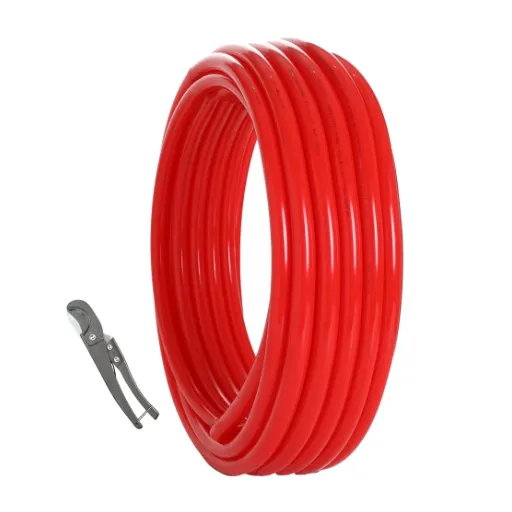
Preparation and Tools Needed
Before the installation of 3-4 PEX pipe, one needs to get all the tools and materials handy for accuracy and smooth working. The necessary tools would be a very good pipe cutter to make clean cuts and burr-free, expansion or crimping tools, depending on the type of fittings being used, and gauge rings or clamps to ensure the fittings are firmly attached. Deburring tools are needed to eliminate all burrs left on the pipe edges after a cut, which could otherwise cause leaks or damage to the pipe during assembly.
🔧 Essential Tools Checklist
- High-quality pipe cutter for clean, burr-free cuts
- Expansion or crimping tools (based on fitting type)
- Gauge rings or clamps for secure fitting attachment
- Deburring tools for smooth pipe edges
- Measuring tools (tape measures)
- Pipe supporting clamps
- Markers or chalks for layout marking
- Protective clothing (gloves and eye protection)
Also needed are the correct fittings and connectors, which can be brass, plastic, or stainless steel, depending on their system requirement and compatibility. Measuring tools like tape measures, pipe supporting clamps, markers or chalks, etc., should be available for use during layout and marking. Professionals should see to it that applications for protective clothing, such as gloves and eye protection are comply with workplace safety requirements.
Spec should be followed to ensure optimum performance, so the latest installation manuals and local plumbing code should be checked before execution. The systems and preparatory measures are essential in developing an impeccable PEX plumbing system, which is reliable and lasts for a long time.
Step-by-Step Installation Process
Preparation and Planning
First, take into account the entire layout of the plumbing system to gauge whether the lengths of PEX to order, the quantity of fittings, and the tools needed. Materials must be approved for use under local plumbing codes and standards. Always ensure the water main is shut off before commencing any work to avoid unforeseen leaks or water damage.
Cut PEX Tubing
To cut, use only a special PEX pipe cutter for smooth and clean edges. Do not use any alternative cutting tool, since uneven or jagged edges will erode the connection and cause it to eventually leak.
Put on the Crimp or Clamp Rings
Before any PEX tubing is connected to the fitting, slide the crimp ring or clamp ring onto the pipe end. It should be centered about 1/8 to 1/4 inch from the tubing’s edge.
Attach the Fitting
Insert the desired fitting—such as a tee, an elbow, or a coupling—fully into the tubing end. Make sure that the fitting has been pushed all the way in, since partial insertion will lead to a weak and unreliable connection.
Secure the Connection
Depending on the ring used, utilize the appropriate tools. Press the crimp ring around the tubing using a crimping tool; alternatively, use a clamp tool to tighten the clamp ring until it is secured. Confirm that the connection is secure by ensuring that consistent clamping pressure is applied, according to the ring manufacturer’s specifications.
Leak Testing
Now that all the system connections are made, it is time to open the main water supply and pressurize the lines. Inspect all joints and fittings for any signs of leakage, and rectify any defects by re-crimping or replacing faulty pieces.
Anchor-and-Secure PEX Tubing
Fix all tubing that can move or vibrate into the structural supports using suitable PEX clips or hangers. Support the tubing at the recommended spacing intervals, usually about 32 inches for horizontal runs, to prevent sagging and reduce stress on the connections.
Document and Conclude Installation
Document the complete system, complete with photographs and notes on fitting locations and materials. Conclude the installation by providing maintenance recommendations to the end user and ensuring that all relevant codes and standards were followed.
✅ Professional Tip: Following the precise methodology will help the professional install a durable and efficient plumbing system with PEX while maintaining minimum risk to operations.
Common Mistakes to Avoid
When installing a PEX plumbing system, there are several common errors that can critically affect the performance and longevity of this system.
❌ Critical Installation Errors
- Using Incompatible Fittings: One such error would be to use incompatible fittings or connectors that will cause a leak or weakness in the system. It is crucial to check manufacturer specifications to ensure all components are designed for PEX material.
- Improper Cutting: Another mistake would be cutting PEX tubing improperly; rough or angled cuts might prevent a secure connection and cause eventual failure. Always use a specialty PEX cutter to produce a clean and square cut.
- Inadequate Securing: This pitfall pertains to inadequately securing the tubing. Poorly secured pipes can move under pressure changes and, because of that, wear out over time. Thus, the clamps need to be judiciously placed and spaced properly so the pipes do not move excessively.
- Ignoring Thermal Expansion: Furthermore, not accounting for thermal expansion may lead to unnecessary stress in fittings and joints. Slack or curves in long runs should be provided to protect against excessive tension caused by temperature changes.
- Skipping Pressure Tests: Lastly, disregarding pressure tests after installation becomes a crucial mistake since it is necessary to ensure the integrity of the system before being put into operation, while its omission can hide defects which might cause considerable water damage if allowed to develop.
Correcting these errors will enable the creation of a PEX plumbing system that works well and is up to code.
Cost-Effectiveness of PEX Tubing
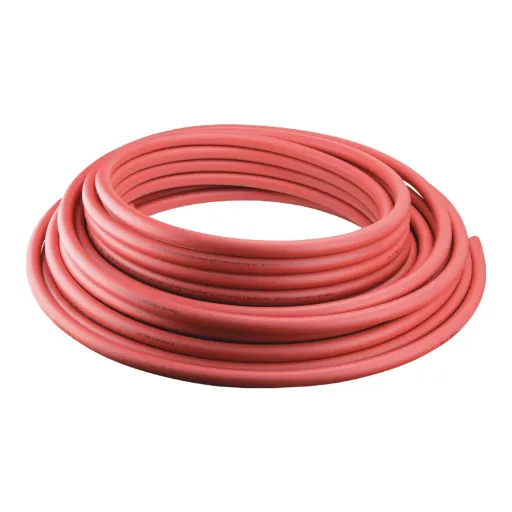
Comparing Costs: PEX vs. Copper Pipes
While PEX pipes are almost certainly less expensive than copper pipes, they cost anywhere between $0.50 and $2 per linear foot compared to $2 to $8 per linear foot for copper. The cost of fittings and installation may also come in favor of PEX.
| Aspect | PEX | Copper |
|---|---|---|
| Price/Foot | $0.50–$2/ft | $2–$8/ft |
| Connector Cost | $0.50–$1/unit | Higher |
| Setup Effort | Simple | Complex |
| Lifespan | 40–50 years | 50+ years |
| Flexibility | High | Low |
| Rust Resistance | Yes | No |
Long-term Savings with PEX Installation
In the long run, PEX piping systems provide considerable cost-saving potential. These considerations involve construction material costs, labor rates, and durability. PEX pipes, which are made of cross-linked polyethylene, are much less expensive than copper pipes, not only in material costs but also in fitting costs. PEX’s flexibility and simplicity in installation reduce time and labor, again bringing down overall project costs.
💰 Material Cost Savings
PEX systems can work quite efficiently under different sets of temperature and pressure without suffering any major deterioration in performance, thus qualifying as an environmentally sound and economically wise option for water distribution systems.
🔧 Installation Savings
Since the average cost of installation of copper piping (material and labor) for a typical home ranges somewhere between $8,000 and $10,000, switching to PEX would definitely reduce those costs to the tune of about $4,000 to $6,000.
Research illustrates the fact that ACE inherently impedes the formation of pinhole leaks and corrosion, an occurrence that is very common in copper pipes, owing to its resistant nature. These would impart to the PEX systems the benefit of having their lifespan extended to an estimated 40 to 50 years under ideal conditions. When factoring in the decreased maintenance and repair costs, the longer lifespan builds a pretty sound value proposition as time goes by.
💡 Bottom Line: Later on, the PEX system is even more rewarding, as the specimen is less likely to warrant major repairs, further reinforcing the attractiveness of the cost savings. PEX is definitely subject to consideration with any plumbing solution, as it is the most versatile and durable product, and yet it is an excellent investment.
Factors Affecting Overall Cost
There are several things that comprise the installation or retrofit labor cost of plumbing; knowing these elements can help one make better decisions.
- 📏 Project Size and Scope: First, the size and scope of the project weigh heavily upon such expenses. For a large house or building, the pipe system needs to be extensive, so more material and labor costs are involved. For small projects, material costs are low, and installation time is short. Correct measurements and assessments at the very beginning of a project can help in forming a good plan so that there will be no adverse expenses.
- 🔧 Material Choice Impact: Another effect of the choice of materials is on cost. Traditional materials like copper are relatively expensive on a per linear foot basis when compared with alternatives like PEX. Beyond their price, the making of them is quite important in relation to ease. For example, PEX piping is usually faster and easier to install. This is because the flexibility and lightweight properties of PEX reduce labor time, which reduces labor costs.
- ⏱️ Longevity and Maintenance: Then, factor in longevity and maintenance requirements. Sometimes, high upfront costs can be balanced by lower lifetime maintenance costs.
- 🌍 Regional Factors: Lastly, regional labor charges and building codes also contribute to overall costs. If labor wages are higher in an area, installation charges will be relatively higher, whereas certain local codes will require more compliance measures that may include an inspection or specific fittings, further increasing the cost.
So by taking into consideration all these factors, I can adequately evaluate and gauge the cost-driving factors for my project and make an informed decision that will strike a good balance between financial limitations and what is, in reality, a long-term value.
Frequently Asked Questions (FAQ)
References
- New England Institute of Technology: The Five Types of Plumbing Pipes
It talks about PEX pipes among other usual plumbing materials. - Hawaii Open Educational Resources: Piping & Fittings-Building Maintenance & Construction
Discusses the shift of residential construction methods from copper to PEX. - California Science & Engineering Fair: Which Types of Pipes Are Most Earthquake-Resistant?
Looks into the flexibility and resistance of PEX piping to stress.
Ready to Start Your PEX Installation Project?
With this comprehensive guide, you now have all the knowledge needed to make informed decisions about 3-4 PEX pipe for your water system projects. Remember to always follow local building codes and consult with professionals when needed.



